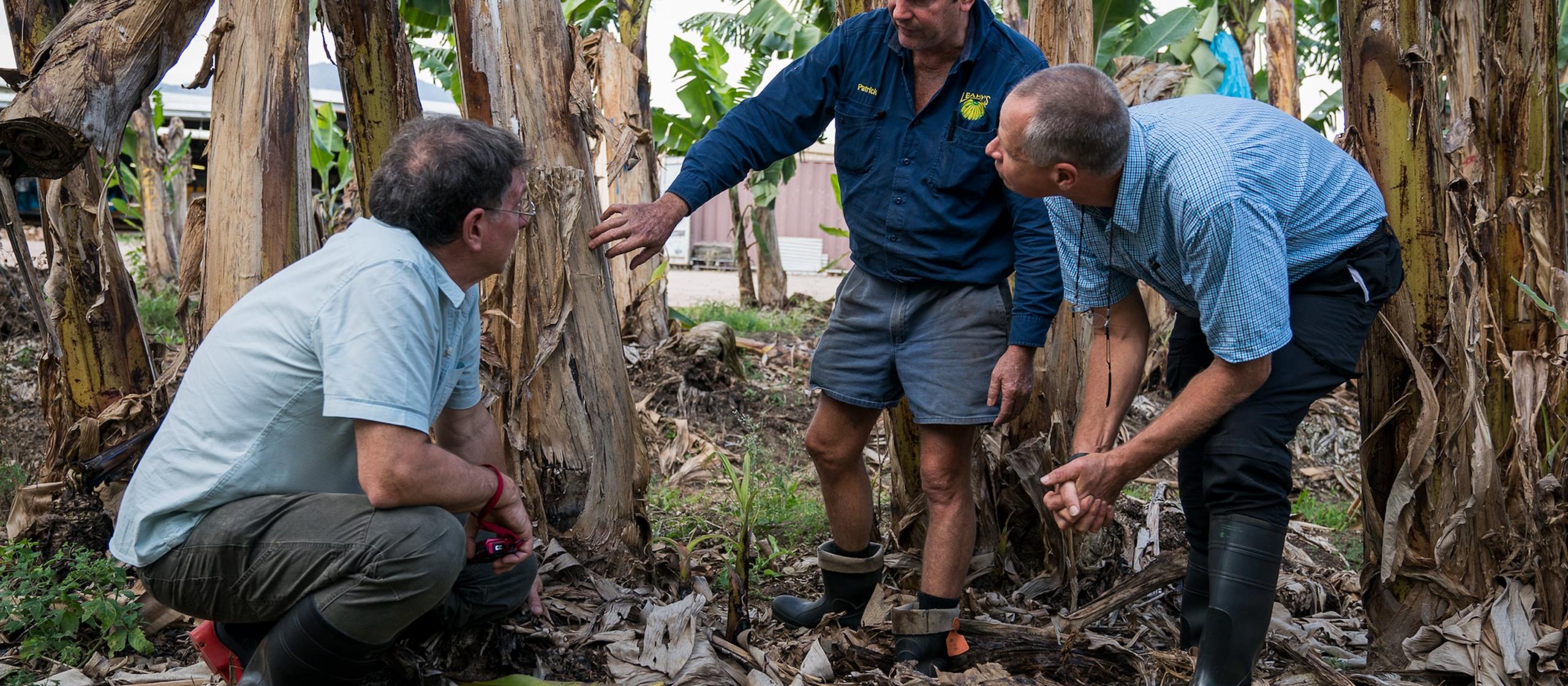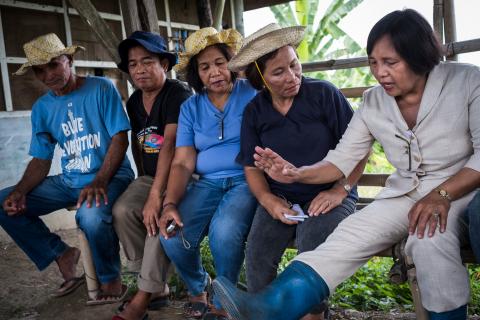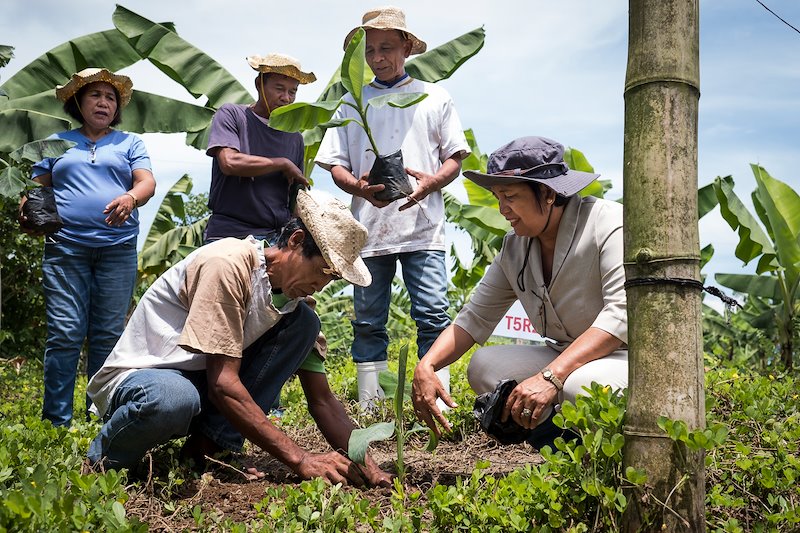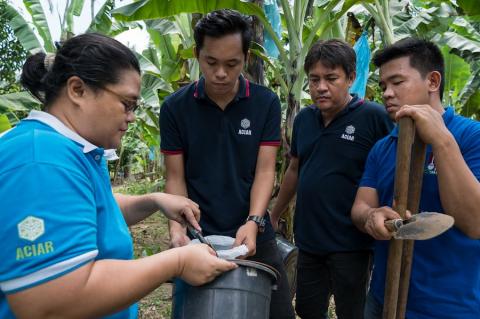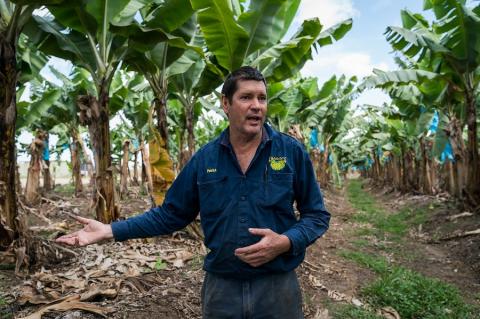- HomeHome
-
About ACIAR
- Our work
- Our people
-
Corporate information
- ACIAR Audit Committee
- Commission for International Agricultural Research
- Policy Advisory Council
- Agency reviews
- Executive remuneration disclosure
- Freedom of information (FOI)
- Gifts and benefits register
- Information publication scheme
- List of new agency files
- Contracts
- Legal services expenditure
- Privacy impact assessment register
- Commonwealth Child Safe Framework
- Benefits to Australia
- Careers
- 40 years of ACIAR
-
What we do
- Programs
- Cross-cutting areas
- Resources
- Where we work
-
Funding
- Research projects
- Fellowships
-
Scholarships
- John Allwright FellowshipScholarships to study in Australia for ACIAR partner country scientists to have Australian postgraduate qualifications
- ACIAR Pacific Agriculture Scholarships and Support and Climate Resilience Program
- Alumni Research Support Facility
- Publications
- News and Outreach
Date released
21 February 2018
You may not realise it, but Australia is in the midst of a battle against an insidious enemy, spreading unseen through the soils of our tropical crop-lands. The cost of losing this fight could mean the end of one of our most successful rural industries—bananas.
Making matters worse is that Fusarium Wilt—commonly known as Panama Disease—is part of a trio of problems spreading out of Asia and threatening to decimate global banana supplies.
The Australian Centre for International Agricultural Research (ACIAR) has been on the front lines of this biosecurity battle for over a decade, with knowledge gained from overseas research projects proving invaluable to slowing the spread of Panama Disease in Australia and other partner countries.
Importance of banana
Bananas are the world’s most traded fruit. In Australia, more than five million bananas are eaten every day, making it the number one selling supermarket product. Worth around $AUD600million annually, Australia’s industry has doubled in the last 30 years and has become critically important to Queensland’s economy, employing over 10,000 people in rural areas.
High in potassium and a good source of carbohydrates, bananas are both a favourite snack and an important staple food in many developing countries. Throughout the tropics, bananas are a profitable cash-crop and provide food security for smallholder farmers and their families.
‘Banana industry in our province is very important because it composes 70 per cent of our economy,’ says Dr Ana Notarte, Provincial Agriculturalist within the local Davao del Norte Government in the southern Philippines. 'We have about 45,000 hectares of banana industry. For export banana, we have about 34,000 hectares, and the rest is the local banana,’ she says. ‘So if the banana industry [is] devastated or put down, then it will really affect the life and the family [of local farmers].’
Riza Calma, a banana farmer in Davao del Norte province agrees. 'Bananas [are] our main source of income [and] really part of our life. If we don't have the banana farms…[there will be no] good benefits for our family,' she says. 'In our location, we have seen already other farmers that are about to lose their production [due to Panama Disease].
History of Panama Disease
Panama Disease is caused by a soil-dwelling fungus that blocks the water-conducting tissue in the stems of banana plants starving the plant of water, causing the leaves to turn yellow, wilt and die. First described as Fusarium Wilt from the Brisbane Botanical Gardens in 1874, the first-recorded strain of the fungus—Foc Race 1—was reported in 1890 causing a commercially significant disease in banana plantations in Panama—where it gained its popular name. The disease spread rapidly through the Caribbean and Central America, affecting the Gros Michel variety that was at the time the preferred banana of global trade. Initially the banana companies stayed ahead of the disease by planting new land; but, once infected, the fungus lives on in the soil and, by the 1950s, the banana industry had effectively run out of clean land and the industry based on Gros Michel collapsed.
Planting only one variety of crop, however, almost inevitably results in selecting new versions of a disease. In 1990, a new strain of Fusarium Wilt that could attack the Cavendish banana—Tropical Race 4 (TR4)— was described from Taiwan. From there it spread rapidly through South-east Asia, wiping out the Cavendish-based industry in Malaysia and appearing on Australia’s doorstep in Indonesia in 1994.
ACIAR joins the fight
The following year in 1995, ACIAR funded projects evaluating the resistance of different cultivars to TR4. Disease-tolerant cultivars that had allowed banana cultivation to continue in Taiwan were introduced as a stop-gap measure, enabling Indonesian farmers to continue some production even in the presence of Panama Disease.
TR4 made its way to Australia in 1997 and was first detected in the Northern Territory. Just six years later, the territory’s burgeoning banana industry had been wiped-out. However, thanks to the strict quarantine measures imposed, Australia’s major banana production hub in Queensland remained disease-free.
Research through ACIAR-funded projects continued in the late 1990s and early 2000s but, despite the researchers’ best efforts, TR4 continued to spread throughout Asia, reaching the Philippines, the sixth-largest exporter in the world, in 2005.
Due to the knowledge gained in Indonesia from earlier research, the Philippine Government partnered with ACIAR to develop a project helping defend smallholder banana farmers from being devastated by TR4. The ensuing project was run by the Queensland Department of Agriculture and Fisheries (QDAF) and under the leadership of Stewart Lindsay.
The science of stopping Panama
On 4 March 2015, Australia’s banana industry received news it didn’t want to hear: a plantation in far north Queensland had tested positive for TR4—Panama Disease had made its way to Australia’s production centre.
Biosecurity Queensland quarantined the farm near Tully, south of Cairns, overnight and turned to prior knowledge gained on how to best contain the outbreak.
The biggest challenge with Panama Disease is how easily it spreads. Soil-borne, it clings to the bottom of boots, farming equipment, tyres and can even flow from farm to farm through water run-off. Most recently, banana farmers have taken to the skies to hunt feral pigs which are suspected of spreading TR4 as they forage around far-north Queensland.
While the carriers are many, the science of managing Panama Diseases focuses on three key elements:
- Improved biosecurity measures to stop the spread from farm to farm
- Planting ‘cover crops’ to create soil conditions that suppress the disease and
- The use of variants of Cavendish that are at least partially resistant to TR4
These three aspects have formed the basis of efforts in the Philippines and Australia to curb the spread and impact of TR4.
Lessons from the research in Indonesia and the Philippines led to the implementation of the farm zone system and a series of educational workshops to help Australian farmers avoid spreading the disease. The projects provided Australian researchers with the opportunity to develop integrated crop management systems, using a combination of partially resistant cultivars with a disease-suppressive soil management regime.
‘The experience we gained [on the ACIAR project] in the Philippines proved timely for Queensland and the value of that experience has been acknowledged by everyone in the banana industry and the Queensland Government,’ says Dr Tony Pattison from QDAF who led ACIAR projects in Indonesia in the mid-2000s.
‘The project identified that the amount of TR4 inoculum in the soil is responsible for overcoming the resistance of banana plants,’ Pattison says. ‘That makes it paramount to keep levels of Fusarium low and, to do that, practices are needed that encourage growth of beneficial soil organisms. We knew from trials in Indonesia and Australia that soil biodiversity can be enhanced by increasing plant diversity on the plantation floor, either as crops or ground covers.’
After initial research, the results of the project indicated Pinto peanut showed the most promise for covering ground between the banana plants, providing the biodiversity on the plantation floor so desperately needed when fighting Fusarium. An additional biosecurity benefit of the ground cover is that it reduces the likelihood of TR4 spreading throughout a plantation via contaminated mud on the soles of workers’ shoes.
‘Biodiversity is the key to breaking the Fusarium wilt disease cycle,’ says Pattison. ‘It converts the plantation environment into something more complex and challenging than a monoculture of banana clones in a biological desert.’
Living next door to TR4
For Patrick Leahy, a banana farmer with a 250-hectare plantation next to the affected site in the Tully Valley, the knowledge gained from the ACIAR projects had extra importance. He says the banana industry worldwide was amazed by the TR4 containment achieved in Australia.
‘Panama Disease is a devastating disease and it’s probably the number one issue that has been around for bananas for a long time,’ says Leahy, who can remember the fallout when TR4 first reached his area. ‘Here in Queensland, the Australian Banana Growers Council bought out the contaminated farm and safely cleared it of infected plants while Biosecurity Queensland established an effective quarantine,’ he says.
It was this drastic but necessary action that gained the attention of other banana production centres around the world. ‘Other countries are looking to us for answers, but they may not be willing to do what is necessary,’ says Leahy, who has worked on ACIAR projects helping local famers in the Philippines.
‘As a grower, I see things differently to scientists and I can talk to Filipino farmers at a different level,’ he says. ‘I first travelled to the Philippines in 2013 when I witnessed the total devastation that TR4 can cause. At that time, the Filipino farmers wanted a silver bullet fix. Instead, the project demonstrated that with careful management, banana production is possible with semi-tolerant banana plants despite the widespread presence of TR4.’
Leahy has been running trials of semi-resistant banana cultivars on his farm for 15 years and has been an advocate for maintaining ground cover between banana plants and implementing a suppressive-soil strategy, developed by Dr Tony Pattison through the ACIAR project.
An added benefit is that the biologically active soils that suppress Fusarium are also suppressive to nematodes, while the ground cover helps to suppress weeds.
‘It has been years since I’ve had to use any nematicides to chemically control nematodes on my farm and my use of herbicides has decreased 50 to 60 per cent,’ says Leahy, who uses the associated cost savings to help manage risks in years when profit margins are tight.
He adds that while biosecurity threats such as TR4 do occasionally keep him up at night, he prefers to take a proactive approach to protecting his industry. Besides running on-farm trials, he has held industry positions dealing with Fusarium biosecurity threats, including in the Northern Territory, and joined the grower-managed committee advising the ACIAR project in the Philippines, travelling annually to project sites.
The day after tomorrow
There’s no question Australia and its banana industry are facing an uphill battle. At the time of writing, a third farm in the Tully Valley has been confirmed as being infected by TR4. While the disease continues to spread, researchers are working tirelessly to develop new and effective ways to suppress the soil-borne fungus.
For Riza Calma, a banana farmer in Davao del Norte province, the struggle against Panama Disease has been challenging, but she is looking forward to a productive future.
'My dream [on] my banana farm, is to build strong and successful farmers. Another thing for the cooperative, to become stable, profitable, productive, and globally competitive banana farms,' she says. 'As a Filipino farmer, I'm very thankful to ACIAR and the Australian people for giving us the priority for investing their project in our country.'
Since 1990, ACIAR has invested over $AUD3.3million in research aimed at minimising the spread of TR4 and its impact on both smallholder farmers and commercial growers. ACIAR is currently funding a project in the Philippines and Australia bringing together experts from both countries. Additional research funding also comes from the banana industry research levy, QDAF and the federal government through Hort Innovation. The collective action stemming from these initiatives is the best chance for managing Panama Disease, reducing the impact on farmers and saving the world’s favourite fruit.
More information is available via the ACIAR website:
- Integrated management of Fusarium wilt of bananas in the Philippines and Australia (2014-2019 - $AUD822,048)
- Mitigating the threat of banana Fusarium wilt: understanding the agroecological distribution of pathogenic forms and developing disease management strategies (2006 - $AUD600,566)
- Diagnosis and management of wilt diseases of banana in Indonesia (2005 - $AUD966,168)
- Evaluation of Sigatoka and Fusarium wilt resistant hybrids and cultivars in Tonga and Queensland (1995 - $62,000)
- Banana improvement in the Pacific Islands (1990 - $AUD865,062)
This blog has been produced by the Australian Centre for International Agricultural Research, with images and videos courtesy of Conor Ashleigh.
Special thanks collaborating institutions Queensland Department of Agriculture and Fisheries, Australian Banana Growers Council, University of Southeastern Philippines, Provincial Agricultural Office, Davao Del Norte - Region XI, Philippines, Kapalong Growers Cooperative, Davao del Norte and MegaManila Pest Management Specialists Inc., Philippines.
